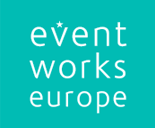Ben Fowler, Director of gamification company Alternate Experiences, shares his views…
Hybrid. It’s the word of 2021 already. “Best of both worlds”. How can you combine your physical audience with a virtual one so that you can keep your event open to the rest of the world? “Glocalisation”.
No one has really defined exactly what hybrid should look like – there are a few versions banding around already. In its simplest form, it’s getting some professional live streams running, and sending it out to a global audience, with a variety of platforms ready to do the heavy lifting for you.
Of course, going down this route creates an inherent cost issue. Events will be shouldering the dual cost of in person and virtual, rather than one or the other. To make it worth your time you better make sure you have a clear target audience for both.
So let’s say you’ve got your audiences, and your hybrid event is good to go. Thrusters ready, venue booked. How are you going to make sure both your virtual and physical audiences feel a part of it?
Our suggested remedy – games. Gamification is an increasingly popular way to create a memorable experience for audiences, and offers a smorgasbord of ways to nail attendee engagement. It’ll make both your audiences feel more appreciated and considered, at a time where some events may simply think the luxury of being able to take place is enough.
What’s that? You want some free ideas on what that could look like? Go on then, you’ve twisted my arm.
Pre-Event
The great thing about your pre-comms is you can push it out to both your virtual and physical audience and provide an equal experience. Take advantage of that fact.
Use your pre-comms to introduce small gamifications which build anticipation for the event. Why not include a “golden ticket” puzzle that, once completed, gives guests access to a secret speaker slot? Virtual winners get passcode access to the slot, physical attendees get their name on the list. With a limited number of spaces at this mystery slot, you can ramp up the scarcity factor, a key feature in gamification.
A reward system like this is equitable – both audiences stand to gain the same prize. You’re already using this game to set your stool out and say “This event is valuable for both audiences”.
During the Event
Here comes the crunch. How are you going to ensure both audiences are getting value and neither feels left behind?
Why not create connections between your two audiences through games? Have a treasure hunt that’s split across both the physical and virtual spaces. Found half a clue at the venue? Check out the virtual chatter and see if you match up with someone with the other half. Depending on the type of event, you could even place people into chat groups that cut across virtual and physical, where they can message each other with what they’ve uncovered so far.
If it’s an exhibition, go wild and have completed puzzles rewarded with free products or trials from exhibitors, to have everyone involved in the action.
“That’s great Ben, but what I’m really worried about is my virtual audience being left behind”.
Okay then, I’ve got an answer for that too. Why not project a virtual whiteboard on stage, enabling your speakers to interact, live, with your virtual audience. Virtual whiteboards have the beauty of being able to pre-design them, so you can create games such as “pin the insight on the speaker”, as your virtual audience can match insight statements to the speaker, right in front of them. Social connectedness and influence is a key part of gamification – if your virtual audience knows their input is constantly visible to both speakers and the physical audience, it’ll spur on their contributions. And all it requires is a £10 a month virtual whiteboard subscription, a cheap laptop and a good sized projector.
After the Event
This area is often the most neglected, but it provides a great opportunity to unify both your virtual and physical audience one last time.
You can play it simple, with something like a post event quiz that harnesses statistics and contributions from your two audiences. Think “What was the most popular exhibition with the physical audience”, or “Which virtual attendee said X?”. You can flip the experience by asking the live audience questions about virtual participation, and vice versa. Get those event relevant prizes ready…
Whatever you do, now the main event is over you’ll be sitting on a great bed of post-event content and insights that can fuel it. Make sure you harness it.
Keep it Simple , Keep it Relevant
Whatever approach you consider to gamifying your event for a hybrid audience, it’s better to underdo it than overdo it. You’re not trying to invent the next best thing since Chess. Simple, relevant games that harness the subject matter and play into key gamification principles such as accomplishment, empowerment of creativity, and unpredictability, will layer on plenty of value.
 Ben Fowler is Director of Alternate Experiences, a company that creates better business experiences through games, such as teambuilding, events and networking.
Ben Fowler is Director of Alternate Experiences, a company that creates better business experiences through games, such as teambuilding, events and networking.
So what are you waiting for? Get playing!
Find out more at www.altexperiences.co.uk

